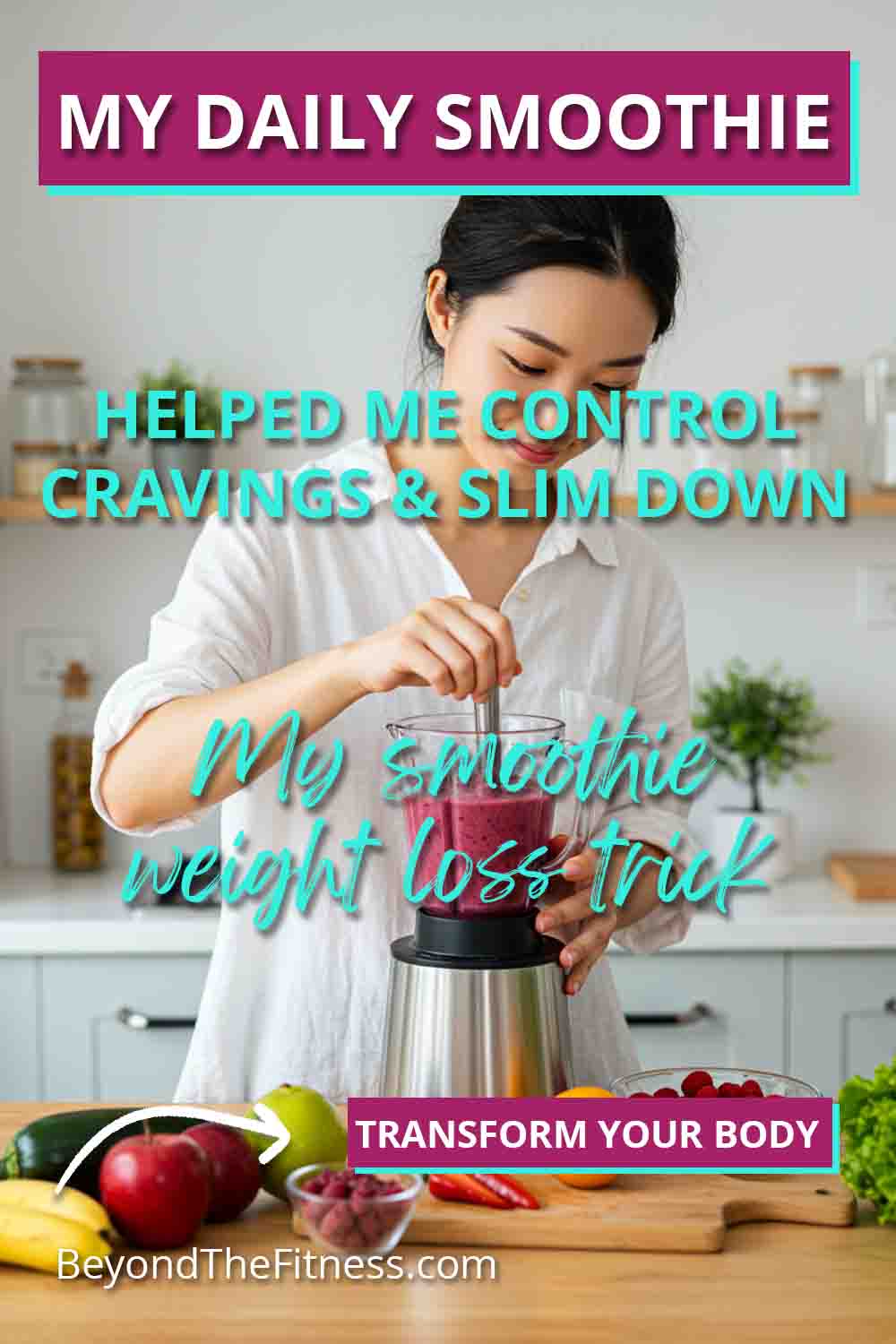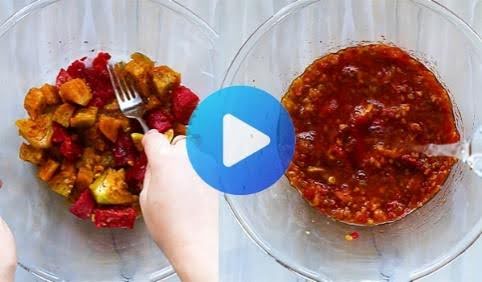Feeling hungry often gets in the way when we are trying to manage our weight. It is a nagging feeling that can make sticking to a healthy eating plan really tough. You might be surprised to learn that a simple smoothie, when made correctly, can be a powerful tool to help keep that hunger feeling away and support your weight loss journey.
I know what you might be thinking. Aren’t smoothies just sugary drinks? Sometimes they can be, but they do not have to be. A well-built smoothie is very different from a sugary milkshake or a plain fruit juice. It is all about what you put into it. Let’s explore how these blended drinks can actually help you feel full and satisfied for longer periods.
Understanding Why We Feel Hungry
Before we dive into smoothies, let’s quickly touch on hunger itself. Our bodies have signals, like little messengers, that tell our brain when we need energy (food). One important messenger is a hormone called ghrelin. Think of it as the “go” signal for eating. When your stomach is empty, ghrelin levels go up, telling your brain, “I’m hungry”.
Then there are messengers that signal fullness, like leptin. Leptin tells your brain, “Okay, we have enough energy now, you can stop eating”. When we are trying to lose weight, we want to manage these signals. We want to feel full and satisfied after eating, so we are not constantly battling that “go” signal from ghrelin. This is where the right kind of smoothie can step in to help.
How Smoothies Help You Feel Full
So, how does a smoothie work its magic on hunger? It comes down to a few key things.
- They Take Up Space: Smoothies are liquids, but they can be quite thick and full of ingredients. This volume physically fills up your stomach. When your stomach stretches, it sends signals to your brain that you are getting full. Drinking a good amount of liquid, especially a thicker smoothie, can trigger this feeling faster than eating a small, dense snack. It is like filling a balloon; the smoothie expands in your stomach.
- Fiber is Your Friend: This is probably the most important part. Smoothies made with whole fruits, vegetables, seeds, or oats are packed with fiber. Fiber is a type of carbohydrate that our body does not digest easily. There are two main types, and both help with fullness. Soluble fiber absorbs water and forms a gel-like substance in your stomach. This slows down how quickly food leaves your stomach, keeping you feeling full for longer. Insoluble fiber adds bulk to the food moving through your system, which also helps with satiety and keeps your digestion regular. Think of fiber as a sponge soaking up water and expanding, and also as a broom helping to sweep things along slowly and steadily.
- Protein Power: Adding a source of protein to your smoothie is a game-changer for hunger control. Protein is known to be the most filling nutrient. It takes longer for your body to digest protein compared to carbohydrates. It also influences those hunger and fullness hormones we talked about, helping to lower the “I’m hungry” ghrelin and potentially boost fullness signals. Including protein helps make your smoothie more of a mini-meal than just a drink.
- Healthy Fats for Staying Power: Including a small amount of healthy fats, like those from avocado, chia seeds, flax seeds, or a bit of nut butter, can also increase how long you feel full. Fats slow down stomach emptying even more than fiber or protein. This means the energy from your smoothie is released more slowly and steadily, preventing a quick return of hunger pangs. Just be mindful of portion sizes, as fats are higher in calories.
- Nutrient Satisfaction: Sometimes, cravings or persistent hunger can be linked to missing certain nutrients. A smoothie packed with fruits and vegetables delivers a wide range of vitamins and minerals. Getting enough of these essential nutrients can help your body function optimally and may play a role in regulating appetite and reducing cravings for less healthy foods.
- Balancing Blood Sugar: When you eat sugary foods or refined carbohydrates, your blood sugar can spike quickly and then crash down. That crash often triggers hunger and cravings. Smoothies made with low-sugar fruits (like berries), vegetables, protein, and fiber help keep your blood sugar levels more stable. There is no big spike, so there is no dramatic crash, leading to more consistent energy and less hunger between meals.
Smoothies vs. Juices: Why Fiber Matters
It is really important to understand the difference between a smoothie and a juice when talking about hunger control. Juicing typically removes most or all of the fiber from fruits and vegetables. You are left with the liquid, vitamins, and sugars. While juice can provide some nutrients, it lacks the fiber that is so crucial for slowing digestion and promoting fullness.
Because juice has little to no fiber or protein, its natural sugars are absorbed very quickly, which can lead to that blood sugar spike and crash I mentioned. This often leaves you feeling hungry again soon after drinking it. Smoothies, on the other hand, use the whole fruit or vegetable, keeping all that beneficial fiber intact. This makes smoothies a much better choice for managing hunger and supporting weight loss compared to juices.
Building Your Best Hunger-Busting Smoothie
Creating a smoothie that keeps you full is like building with blocks. You need the right pieces in the right amounts.
- Start with a Smart Liquid Base: Choose liquids that do not add a lot of extra sugar or calories.
- Water: Zero calories, hydrating.
- Unsweetened Almond Milk: Low in calories and sugar.
- Unsweetened Soy Milk: Offers some protein.
- Plain Low-Fat Kefir or Yogurt (thinned with water): Adds protein and probiotics.
- Chilled Green Tea: Adds antioxidants.
- Avoid: Fruit juices (even 100% juice), sweetened plant milks, sugary sports drinks.
- Pick Your Protein: Aim for about 15-20 grams of protein per smoothie if it is replacing a meal, maybe less if it is a snack.
- Plain Greek Yogurt: High in protein, creamy.
- Protein Powder: Whey, casein, or plant-based options (pea, soy, hemp). Choose ones with minimal added sugar.
- Cottage Cheese: Surprisingly good in smoothies, adds creaminess and protein.
- Tofu (Silken): A good plant-based option, blends well.
- Load Up on Fiber: This is where fruits, veggies, and seeds shine.
- Leafy Greens: Spinach is almost tasteless, kale works well too. Start small if you are not used to them.
- Low-Sugar Fruits: Berries (strawberries, blueberries, raspberries) are excellent choices. Half a banana adds creaminess but also sugar, so use it wisely. Apple (with skin) or pear (with skin) adds fiber.
- Vegetables: Cucumber, celery, zucchini, cooked beets, or carrots can add nutrients and bulk without much sugar.
- Seeds: Chia seeds, flax seeds (ground is best for nutrient absorption), or hemp seeds are fiber and healthy fat powerhouses. They also thicken the smoothie.
- Oats (Rolled Oats): Add soluble fiber, making the smoothie thicker and more filling.
- Add Healthy Fats (in Moderation): A little goes a long way.
- Avocado: Makes smoothies incredibly creamy. Use about 1/4 of an avocado.
- Nut Butter: Peanut, almond, cashew butter. Stick to 1 tablespoon, as they are calorie-dense. Choose natural varieties without added sugar or oils.
- Seeds: Chia, flax, and hemp seeds also provide healthy fats.
- Boost Flavor Naturally:
- Spices: Cinnamon, ginger, nutmeg, cardamom add flavor without calories. Cinnamon can also help with blood sugar balance.
- Unsweetened Cocoa Powder: For a chocolatey flavor without the sugar.
- Vanilla or Almond Extract: A drop or two adds flavor.
Common Smoothie Mistakes to Avoid
While smoothies can be great, it is easy to turn them into calorie traps that work against your weight loss goals. Watch out for these common mistakes:
You Might Be Interested In: Learning more about The Complete Smoothie Detox & Weight Loss Program
- Sugar Overload: Using too much high-sugar fruit (like mangoes, pineapple, lots of banana), adding honey, maple syrup, agave, or using sweetened yogurts or milks can quickly ramp up the sugar and calorie content. This can lead to blood sugar spikes and crashes, increasing hunger later. Stick mostly to low-sugar fruits like berries and measure any added sweeteners carefully, or better yet, skip them.
- Skimping on Protein: A smoothie made of just fruit and a liquid base will not keep you full for long. Forgetting the protein source means you miss out on major satiety benefits. Always try to include Greek yogurt, protein powder, or another protein source.
- Forgetting Fiber: Just like protein, fiber is key for fullness. If your smoothie is just protein powder, milk, and maybe a little fruit, you might still feel hungry soon after. Make sure to add those veggies, seeds, or oats.
- Choosing Sugary Bases: Starting with fruit juice, sweetened plant milks, or flavored yogurts adds unnecessary sugar and calories right from the start. Stick to unsweetened, low-calorie liquid bases.
- Hidden Calorie Bombs: Going overboard with high-calorie additions like nut butters, seeds, avocado, coconut oil, or granola can quickly turn a healthy smoothie into a high-calorie meal, sometimes with more calories than you intended. Measure these ingredients instead of just scooping them in.
- Portion Distortion: Making a huge smoothie, even with healthy ingredients, can lead to consuming too many calories. Pay attention to your portion size. Use a standard-size glass, not a giant tumbler.
Smoothies: Meal Replacement or Snack?
How you use your smoothie depends on your goals and what you put in it.
- As a Meal Replacement: If you want a smoothie to replace a meal like breakfast or lunch, it needs to be balanced and substantial enough. This means it should contain a good amount of protein (15-20g or more), plenty of fiber from various sources, some healthy fats, and enough volume to be satisfying. A meal replacement smoothie might range from 300-500 calories, depending on your individual needs. It should keep you full for several hours, just like a regular meal would.
- As a Snack: If you are having a smoothie as a snack between meals, it should be smaller and lower in calories, perhaps in the 150-250 calorie range. Focus on protein and fiber, but keep the portion size and higher-calorie ingredients in check. A snack smoothie is meant to tide you over, not fill you up completely.
Listen to your body’s hunger and fullness cues to decide which role a smoothie should play in your day.
When to Drink Your Smoothie
The timing can also make a difference.
- Breakfast: Starting your day with a high-protein, high-fiber smoothie can set you up for better appetite control throughout the morning.
- Post-Workout: A smoothie with protein and carbohydrates can help with muscle recovery and replenish energy stores after exercise. The protein aids muscle repair, while carbs help refill glycogen.
- Afternoon Pick-Me-Up: Instead of reaching for sugary snacks when the afternoon slump hits, a smaller, balanced smoothie can provide steady energy and curb cravings until dinner.
Experiment to see what timing works best for your hunger patterns and schedule.
More Than Just Smoothies
It is important to remember that smoothies are just one tool in your weight management toolbox. They are not a magic solution on their own. Sustainable weight loss involves a combination of factors:
- Whole Foods: While smoothies are convenient, do not forget the importance of eating whole, unprocessed foods. Chewing solid food also contributes to feelings of fullness. Aim for a balanced diet rich in vegetables, fruits, lean proteins, whole grains, and healthy fats.
- Mindful Eating: Pay attention when you eat (or drink) your smoothie. Slow down, savor the taste, and notice your body’s fullness signals. Avoid distractions like TV or work.
- Regular Exercise: Physical activity is crucial for burning calories, building muscle (which boosts metabolism), and overall health.
- Adequate Sleep: Poor sleep can mess with your hunger hormones, increasing ghrelin (hunger) and decreasing leptin (fullness). Aim for 7-9 hours of quality sleep per night.
- Hydration: Sometimes thirst is mistaken for hunger. Make sure you are drinking enough water throughout the day.
Special Notes for Women
As women, our nutritional needs and hormonal fluctuations can influence hunger, cravings, and energy levels. Nutrient-dense smoothies can be particularly helpful.
- Iron: Including spinach or other leafy greens provides iron, which is important, especially for menstruating women, to help prevent fatigue. Vitamin C from berries or citrus in the smoothie can help enhance iron absorption.
- Calcium & Vitamin D: Using fortified plant milk, dairy milk, or yogurt provides calcium and often vitamin D, both vital for bone health.
- Folate: Leafy greens are also a great source of folate, important for overall health and crucial during childbearing years.
- Managing Cravings: The combination of protein, fiber, and healthy fats can help stabilize blood sugar and potentially reduce cravings that might arise due to hormonal shifts.
Simple Smoothie Ideas to Get You Started
Here are a couple of basic, hunger-curbing smoothie recipes. Feel free to adjust them based on your preferences and what you have on hand. Remember to measure ingredients, especially higher-calorie ones.
- Green Protein Power Smoothie
- 1 cup unsweetened almond milk (or water)
- 1 scoop vanilla or unflavored protein powder
- 1 large handful of spinach
- 1/2 cup frozen mixed berries
- 1 tablespoon chia seeds
- Ice cubes (optional, for thickness)
- Blend until smooth.
- Creamy Berry Oat Smoothie
- 1/2 cup plain low-fat Greek yogurt
- 1/2 cup water (or more, for desired consistency)
- 1/2 cup frozen strawberries
- 1/4 cup rolled oats
- 1 tablespoon ground flax seeds
- Ice cubes (optional)
- Blend until smooth.
- Chocolate Peanut Butter Snack Smoothie (Smaller Portion)
- 3/4 cup unsweetened soy milk
- 1/2 scoop chocolate protein powder
- 1 tablespoon natural peanut butter
- 1 tablespoon unsweetened cocoa powder
- A few ice cubes
- Blend until smooth.
Smoothies can definitely be more than just a tasty drink. When made thoughtfully with the right ingredients like protein, fiber, and healthy fats, they can be a surprisingly effective way to manage hunger, reduce cravings, and support your weight loss efforts by keeping you feeling full and satisfied. Just remember to be mindful of your ingredients and portion sizes to make sure your smoothie is working for you, not against you.
Related YouTube Video
Final Thoughts
Incorporating well-balanced smoothies into your routine could be a helpful strategy on your health journey. They offer a convenient way to pack in nutrients, protein, and fiber, all of which play a role in managing hunger and contributing to a feeling of fullness. Remember that consistency and overall dietary patterns are key. Smoothies work best when they are part of a balanced approach that includes whole foods, regular movement, and mindful eating habits. Listen to your body, experiment with ingredients you enjoy, and find ways to make healthy choices feel sustainable and satisfying for you.







